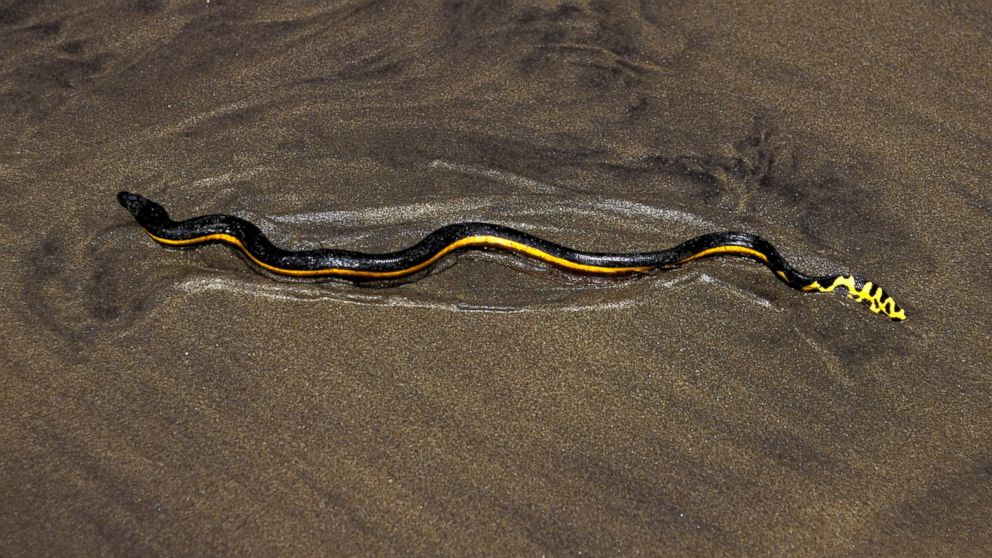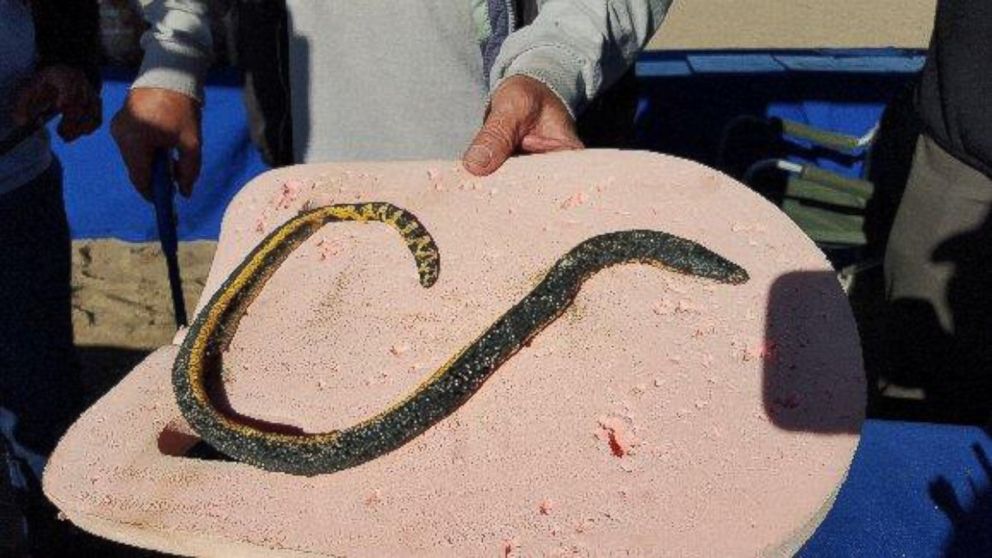Rare Venomous Sea Snake Washes Up on California Beach During El Nino
Yellow bellied sea snake was found by environmental group.

— -- An environmental group aiming to help clean up beaches in California made a startling and scary discovery when they ran across a venomous yellow-bellied sea snake.
The snake was found on Bolsa Chica State Beach, approximately 30 miles south of Los Angeles by members of the Surfrider Foundation. According to the group the poisonous snake has been found just two other times in California, once in the 1970s and once earlier this year.
The environmental group said the snake may have washed up on the shore due to warmer waters related to the El Nino weather event.
"They can swim backward and forward and can stay underwater for up to three hours," the group wrote on YouTube. "There is belief that the El Niño temperature change could have enticed the creature to swim north in search of small fish and eels, which they use their venom to paralyze."
The snake was already dead when it was found by beachcombers.

In October of this year another yellow-bellied sea snake was found on another Southern California beach. While that snake was found alive, it died shortly thereafter.
Greg Pauly, assistant curator of herpetology at the Natural History Museum of Los Angeles County, told ABC News that it is rare for a person to get a lethal dose from these snakes because their mouth is so small and they usually prey on small fish. However he recommended people keep their distance from the animal.
Pauly said the snake is normally found in tropical waters, but the warmer temperatures likely mean there are more snakes in the region.
"We were expecting this," Pauly told ABC News in October. "It's a rare event, but it was also somewhat predictable given that we are currently experiencing a fairly dramatic El Nino year."
ABC News' Emily Shapiro contributed to this report.




